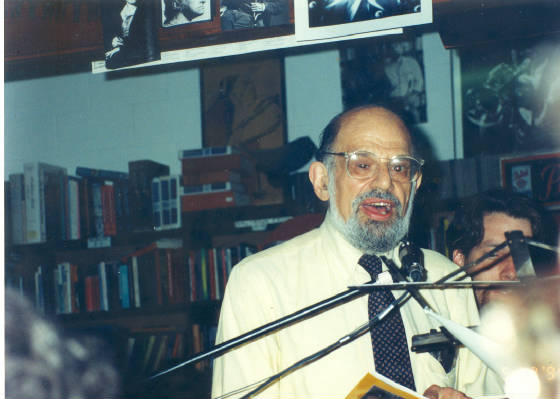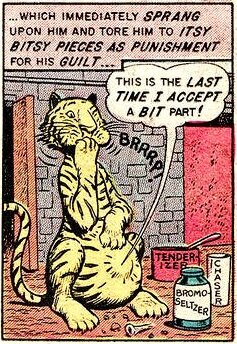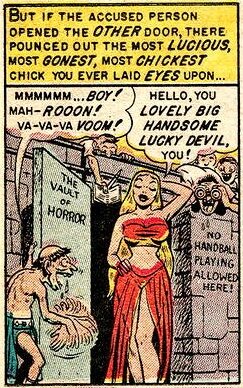Recently a reader of my works sent me an email thanking me for my page on Guy Hague, the man many think was the real life role model for Larry Darrell, the main character and spiritual traveler that attained Enlightenment in the book The Razor's Edge by the British playwright and author W. Somerset Maugham. The writer of the email told me she first became privy to the Hague page through a footnote link in Wikipedia related to The Razor's Edge. From there, she said, because of the additional links and information provided on my pages, she encountered nothing but a continuing wellspring of information regarding Maugham's novel --- easing and widening in a sense her own understanding along her path toward Enlightenment.
Pleased that she was pleased, I went to the Wikipedia page, and sure enough there were two footnotes linked to my Hague page --- neither of which had been solicited by me nor put there by me or an associate. Reviewing the Wikipedia article I noticed something lacking. In that I am an editor of Wikipedia --- albeit, at the time, in a longtime limbo of such pursuits it must be admitted, thinking it might clarify some of the reasons why Larry Darrell chose to go to India in the first place, which to me is very important to the gist of the novel, in a relevant spot I wrote then inserted the following brief section at the end of one of the paragraphs:
"Meanwhile, Larry begins a sojourn through Europe taking a job at a coal mine in Lens, France where he befriends a former Polish army officer named Kosti. Kosti encourages Larry to look toward things spiritual for his answers rather than in books. Larry and Kosti leave the coal mine and travel together for a time then part ways. Larry then meets a Benedictine monk named Father Ensheim in Bonn, Germany while Father Ensheim is on leave from his monastery doing academic research. Father Ensheim, having certain insights other than strictly western spiritual influences, suggests Larry widen his spiritual perimeters and go to India in search of answers."
At the same time, taking a hint from the very academic BESTSELLING NOVELS OF THE 20TH CENTURY: The Razor's Edge (Graduate School of Library and Information Science University of Illinois, Urbana-Champaign), I footnoted the coal miner Kosti to a page on Kosti, albeit not written by me together with a another footnote related to the Benedictine monk, Father Ensheim, written by me. In so doing, there was no insidious intent on my part --- the idea being at the most to bring forth easy access and expand for whosoever might be interested, a more in depth or specific look at the two people responsible for Darrell going to India --- and of which IF he had not gone, there would have been no story.
Now, this is where things get interesting. I go back to the Wikipedia page a few days later and lo and behold, what do I find? The paragraph is still there and intact, but NOT my footnote links. Not only are both of the click-through footnotes on Kosti and Father Ensheim totally and fully removed and gone, but so too is the Hague link that I had nothing whatsoever to do with in the first place. Matter of fact, ironically enough, links by me missing or deleted notwithstanding, if you go to one of the links on the page that have been left in place (not mine), the one by renowned author David Godman titled Somerset Maugham and the Razor's Edge, you will find that by going to his page the ONLY click-through link on his page suggests that you go to my MAIN Razor's Edge page that in turn displays prominently the Guy Hague site.(see)
The Guy Hague footnote links that were on the page originally were sought out, used and put into place by whoever wrote the article in the first place. Why use my Hague page as a footnote reference? Because, if you want to learn, know, or pass onto others any in depth information regarding Hague my page is the ONE that has it. Except possibly for the upcoming materials and information currently in the process of being accumulated --- albeit not yet available to the general public --- by Hague researcher Dennis Wills, mine is the most comprehensive, most researched, and offers a variety of sources and resources --- not to mention the fact that I knew Hague personally.
- NOTE: For those who may be so interested, it has been brought to my attention recently that the Guy Hague link has been restored on Wikipedia's The Razor's Edge page and allowed to stand thus far by authors and editors unknown.
Another page of mine, only this time related to the so-called city of immortals said to be hidden in a remote valley high in the Himalayas and known in the west as Shangri-La, Shambhala titled The Code Maker, the Zen Maker, disappeared too. Even a link on the Wikipedia page related to the object of unknown origin that crashed near Roswell, New Mexico in 1947 I put on titled The Battle of Los Angeles: 1942 UFO --- which, within the text, made numerous mentions of and related back to Roswell --- they would not let stand. Not only is the page written by an eyewitness to the event --- me as a young boy --- it has an exclusive one-on-one personal interview done only by me from an adult eyewitness that actually confirmed the route of the object as it came in behind the mountains and turned into the L.A. basin --- no matter, deleted. One would think almost anything would be a go when related to the Roswell UFO. Think Tommy Tyree, Frank Edwards or Frank Scully.
In any case, I went back into the running tabs that Wikipedia keeps on editors and it shows that it had been years since I had put any links or edits on ANY of their pages --- the last being in 2006 on the Wikipedia page related to the Yaqui Indian shaman-sorcerer Don Juan Matus, as written by author Carlos Castaneda --- who of which, by the way, I carry a semi-personal interest in because of having met and known Castaneda over a period of years in my youth. So, I go to the page and guess what, no link. Thinking that anything can happen in three years, re-editing or whatever, I re-link it with the following link: Don Juan Matus. Not that it matters in the general overall scheme of things because, as it is, if you go to Google and type in Don Juan Matus typically my page comes up before Wikipedia anyway. But, agreeing with the presumed overriding view of the inherent general philosophy of WIKIPEDIA The Free Encyclopedia, that the idea is to make as much information with as many valid, credible, and varying issues to as many people as possible I figured what the heck, there are lots of pages that have come up over time that I could put links on so, "Why not?"
My page on the venerated Indian holy man the Bhagavan Sri Ramana Maharshi typically comes up if not in the top five at least the top ten in a Google search --- out of over 57,000.(see) I go to the Wikipedia page on Sri Ramana and put a link to my related link SRI RAMANA MAHARSHI: The Last American Darshan on the page. Checked back a few days later. Gone. At the same time, in the main text, using Wikipedia's click-through link format I footnoted Ramana's First Death Experience at age seventeen as well as his Second Death Experience twelve years later. Both footnotes had been deleted by the time I checked the Darshan link. In the meantime the link I put on the Don Juan page, a person many think is not a real person, being no more than a figment of Castaneda's overwrought imagination, disappeared as well.
I have a page that is probably as good as any on Paris Hilton titled Paris Hilton and the Art of Zen Enlightenment relating to that time in her life when she decided to find spirituality --- that explores why it would NOT be impossible for even Paris Hilton to experience Enlightenment --- a stretch for some to embrace perhaps, but the whole thesis being to help ease the Dharma gate for ANYONE, Ms Hilton included, who may be interested. In so saying, I go to the main Wikipedia Paris Hilton page and put a link to my page. Checked back a few days later. Gone. Think how much fun they would have with something a little heavier like my page STEPHEN HAWKING: Black Holes, Enlightenment, and Zen or Skipping Rocks With Einstein.
The thing is, if any of you have read or gone through any of my pages you will learn that, as mentioned above, ALL of it is put together to do no more than help ease the Dharma gate for ANYONE who may be so interested. Only the Dharma pure and simple offered through the onetime but no longer available free Zen Enlightenment related AWAKENING 101 and the somewhat more concise, compact, and academic Buddhism In Forty-Eight Chapters. Both are FREE and both are self-paced, requiring no registration and fully available on the net to anyone. No place among any of MY offerings are there any solicitations or requests for donations, fees or charges made on my behalf. Nothing, no books, audio tapes, speaking tours, tee shirts, ballpoint pens, caps or anything else, is sold, hawked or marketed through or by me or any associate. None of it is a commercial venture. Education only. Learning only. The pages that I have attempted to link through on the various Wikipedia pages are integral parts of both offerings. Everything is intended to be educational in nature on one hand and ripen one's mind on the other one hand clapping so that when the right moment manifests itself, Enlightenment will burst clear the veil of the Samsara world. Why, in real life, that any of the material offered through my meager Zen droppings would be misconstrued as being unacceptable to the Wikipedia searching and reading audience to such a point that they would be actually deleted is beyond me and questionable at best. [1]
Sarlo, who writes, runs, maintains, and edits the absolute BEST of any and all of the online guru rating sites, Sarlo's Guru Rating Service, writes, in what I feel is a delightfully in depth insight --- in his own inscrutable way of course, that only he can do --- the following about ME and my various offerings:
"It's organic and sprawling, but intricately interlinked, linking also to outside sites. One of the most fascinating aspects of this interconnectedness is that his collection is not very systematic in the usual sense. Forget site map, there is nothing for it when visiting but to wander from one page to another without much sense of where you're going, and usually without completing the page you're on, which you may return to only after a long garden path. In reading, you become a wanderer."One more tidbit is the domain structure. The Wanderling has undertaken to create his project in free website places, assembling a myriad of apparently different sites, but all interwoven. As the free website places fold and merge and change their rules, he shifts accordingly, thus a migration happens on this level as well."
(source)
I love what Sarlo said and how he says it. Nobody, in all the years my stuff has been on the net, has anybody ever said or thought anything that came so close to the essence of it all. Every time I read it I shake my head in wonderment. To the core the man went, to the core. The thing is, why again, is what I have to offer missed by Wikipedia to such a point that anytime I link something, it has to be deleted?
Sarlo's view is taken up by Jijimuge wherein Jijimuge writes in response to a Zen adept concerns and may offer a reason:
"Even Sarlo, who refused to 'recognize' the Wanderling for years, says, albeit with somewhat more reverence and tongue in cheek, the same thing about him. However, not everyone, primarily because of drawing conceptual construct inferences while being firmly implanted in the Samsaric side of any equation, are willing to do so (i.e. as the poster calls it, navigate). Once the seeker realizes what is going on, things change. The problem is is that the Wanderling is not time-lineal. It is like throwing a rock into a still pond. The concentric rings radiate outward one after the other. The outer ring was once the inner ring and the inner ring will become the outer ring. For the Wanderling there is no difference, ring, rock, pond, first or last. All well and good for him, but what about us. It is like a joke. If you get it it doesn't need to be explained. If it needs to be explained something is lost."
Buddhism In Forty-Eight Chapters is more "time-lineal" in the classical sense while AWAKENING 101 is more like Sarlo and Jijimuge portrays my works. Even so, it is still fairly simple. Everything revolves around the following seven main pages --- in the same numerical order --- that ultimately lead to Enlightenment:
- ZEN ENLIGHTENMENT: The Path Unfolds
A seeker along the path writes of things Zen and his spiritual mentor who was neither teacher nor guru, but the real life person W. Somerset Maugham wrote about in "The Razor's Edge." - THE MENTOR: From William Somerset Maugham's The Razor's Edge
Explores who W. Somerset Maugham's main character Larry Darrell in "The Razor's Edge" was in real life and what happened to him post novel. - SRI RAMANA MAHARSHI: The Last American Darshan
Recounting a young boy's nearly instant transformation into the Absolute during his only darshan with the Maharshi - THE MEETING: An Untold Story of Sri Ramana
Putting into place the super-normal perceptual state called Siddhis in Sanskrit, Sri Ramana meets a former disciple thousands of miles away from the ashrama. - DOING HARD TIME IN A ZEN MONASTERY
An American Zen adept ends up high in the mountains in an ancient Chinese Zen monastery, faced with stark, unfettered study-practice that harkened back to Bodhidharma, Hui Neng and the Buddha. - RETURN TO THE MONASTERY
Describes the events incurred as two monks are sent by the monastery's master to retrieve a lost member of their own, requiring invoking the supernormal perceptual states known as Siddhis to do so. - DARK LUMINOSITY
An Enlightenment experience in the Zen tradition.
In-between and along the way to the above seven I met and interacted with such spiritual personages as Franklin Merrell-Wolff at his compound high in the mountains of the Sierras, Swami Ramdas, the holy man initially responsible for sending Larry Darrell to Sri Ramana in the first place, as well as Alfred Pulyan, an unknown, anonymous American Zen master of high Attainment among others of equal stature or Enlightenment.(see)
Pages under my auspices come in two main categories, both of which in turn, are broken down into three basic types. The two main categories are 1.) those written by me and 2.) those presented by me. Those written by me are just that, written by me. Those presented by me are written by others --- but specifically selected by me. Sometimes those written by others I just let stand, sometimes I include, but always stated as having done so, addendums, modifications, and additions by me. Some presented I am in agreement with, some that I present have a view I disagree with --- with explanations as to why. In a sort of introduction bottom up fashion some are from a layperson's view, some are highly academic, --- often covering the same subject matter. Original sources are always cited, typically with easy click through links. Except for a few and a few that remain true to another's original, all the pages under my auspices maintain a similar, simple straightforward format and font type designed to ensure familiarity, trust, and a certain amount of comfortableness for the reader as they wend their way through the pages. Every effort is made to make sure all click-through links are up and working as well as up to date with valid information. In the main nearly every single page, in some fashion or the other, leads up to, clarifies, or is important either peripherally or directly to the above six pages. Taken together as presented in AWAKENING 101, the intent is to ease the Dharma gate for anyone along the path who may so be interested.
GOOGLE'S ALL WANDERLING PAGE

WOODBLOCK PRINT OF CHIYONO, BY YOSHITOSHI
1839-1892
One night many years ago the female Zen adept Chiyono (1223-1298) was carrying water in an old wooden bucket when she happened to glance across the surface of the water and saw the reflection of the moon. As she walked the bucket began to come apart and the bottom of the pail broke through, with the water suddenly disappearing into the soil beneath her feet and the moon's reflection disappearing along with it. In that instant the young woman realized that the moon she had been looking at was just a reflection of the real thing...just as her whole life had been. She turned to look at the moon in all it's silent glory, her mind was ripe, and that was it...Enlightenment.
Although the Awakening of the Zen experience can be instantaneous or lightning-like in its execution, it does not necessarily translate into being short term in getting there. The Buddha's successor Mahakashyapa simply saw the Buddha hold up a flower and was transformed instantly. The Buddha's brother Ananda served both the Buddha and Mahakashyapa forty years before his Awakening --- and he had the direct benefit of both the Buddha and Mahakashyapa. Enlightenment can come after years of study or it can come from out of nowhere, from a mere gaze as in the Last American Darshan, listed above, or a slight touch from a hand on the shoulder as recorded in The Tree. In all cases it had to do with:
THE MIND BEING RIPE!









